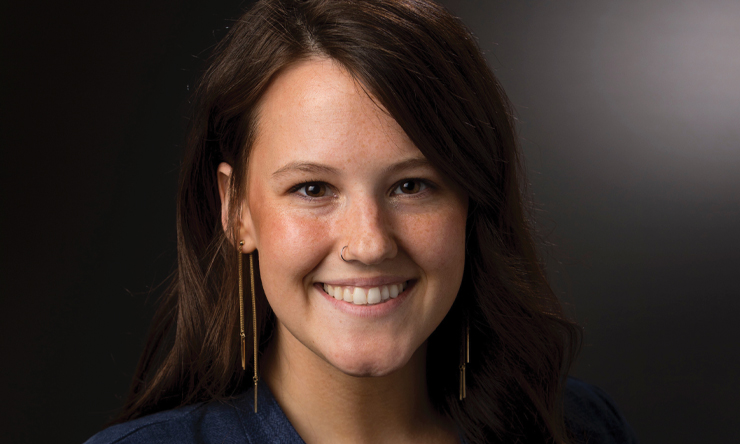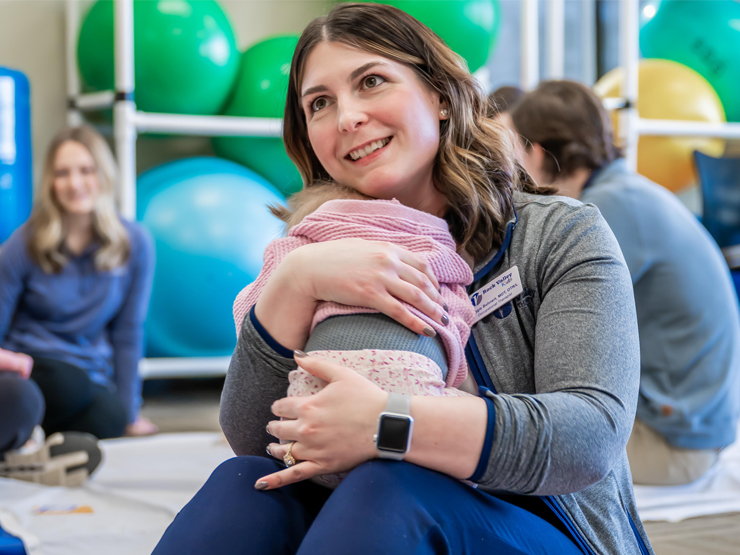Scene Magazine Summer 2008
When Sister Joan Lescinski was selected to follow Edward Rogalski as president of St. Ambrose, the oft-repeated phrase was how she'd have big shoes to fill, both literally and figuratively.
In truth, it was no joke. Rogalski had led the university for 20 years and taken the institution to new levels of physical plant, academic and enrollment growth. To say there was curiosity as to what this shift would mean for Ambrose is putting it mildly.
Yet in her first year Lescinski devoted hundreds of hours to building relationships with students and alumni, donors and community members, and faculty and staff-all the while ensuring Ambrose achieved such goals as reaccreditation and launching a new visioning process, and guiding even more growth.
Scene recently sat down with Sister Joan, as Lescinski prefers to be called, to talk about her "freshman" year at St. Ambrose, and to peer into Ambrose's future.
Scene: One of your major accomplishments this past year has been guiding the Ambrose community through developing St. Ambrose's new vision statement. Please tell Scene readers what the reality of this vision looks like to you, and how you see aspects of it taking shape.
Sister Joan: First of all, when people asked me about my vision for St. Ambrose in the past year, I'd always say, "I can't tell you what the vision is. But I can tell you the process." Our vision has to be corporately grasped-it is not one person's vision, but all of ours. And that is precisely how we have gone about it, by including all Ambrosians in the process of shaping our collective vision and building the excitement for carrying it out.
There is good reason to be excited by our new vision statement because of its forward-moving power: "St. Ambrose will be recognized as a leading Midwestern university rooted in its diocesan heritage and the Catholic Intellectual Tradition. Ambrosians are committed to academic excellence, the liberal arts, social justice and service." This vision grounds us in those traditions we care about-our Catholicity and the liberal arts-and for which we wish to be better known, and pushes us forward in other areas, such as being widely known for academic excellence. The word "leading" has been very purposefully included. We want to reach beyond where we are now.
While our traditions of service and social justice has long been an Ambrose distinction, their pursuit have been largely organic. We've already seen significant participation in service and social justice initiatives in our academic and co-curricular programs. Through our vision, we will make our work in these areas more systematic and recognized.
I also see a greater international aspect to many service-learning opportunities that would take us to such areas of the world as Asia, Africa and Latin America, where Ambrose hasn't been as much in the past. We'll see more of our people-students, faculty and staff-studying abroad or in cultural exchanges, and more students and faculty from other countries coming to St. Ambrose. Our aim will be for no student to leave here without a global citizenship experience.
One very straightforward means of achieving greater academic excellence is in seeking and maintaining national accreditations for various areas of the university. For example, the accreditation process for the new master's of speech-language pathology program is extremely stringent. Seeking this accreditation shows St. Ambrose is serious about academic quality. We also want to continue and build upon the success of our faculty and staff presenting regionally and nationally, and include more students in these professional presentations so that they get a sense of what it means to excel in their chosen area.
Naturally, our vision recognizes that part of our identity is as a diocesan institution, and this past year has presented a wonderful opportunity for me to get to know Bishop Martin Amos and work with him on increasing the ways for us to collaborate and work together. One outcome is the diocesan dioconate program, for which St. Ambrose will house the academic component.
It's also been exciting for me to get to know the members of our governing board and to invite new people to join us in our work. This fall we are strengthening our local ties with three new board members from Iowa, and across the country, with members from California, Florida and Wisconsin.
Scene: In your first year, St. Ambrose has continued its trajectory of growth with the construction of a new residential/academic building ready for occupancy this fall and the acquisition of the Sisters of Humility convent. We're welcoming the largest first-year class ever. Yet our growing pangs are being felt in the surrounding neighborhoods. How do you see us managing our growth, both physically and in enrollment, to best serve our community and our students?
Sister Joan: We have worked to cultivate and maintain good relationships with our neighbors, and this must continue. We want to be sure they enjoy the benefits of living in proximity to a university and that we continue to be good neighbors.
Addressing our physical improvements and issues must also be systematic, building by building. In my first week at St. Ambrose, we recognized five priorities for our physical plant: recreational, athletic and wellness space, classrooms, offices, residential space and parking. And we have started taking steps to address these needs. The new facility on the northwest corner of campus provides us with 13 state-of-the-art classrooms, space for 96 students to live in preferred housing, and a net gain of about 150 parking spaces. We'll soon begin repurposing the Sisters of Humility convent, which will house our graduate programs in speech-language pathology and in social work, and free up needed classroom and office space on our main campus.
Because of our wonderful enrollment growth in our health sciences programs-nursing, occupational therapy and physical therapy-it will be important to complete the capital campaign for the health sciences education center in the next year. A project such as a new recreational/wellness/athletics facility, as well as athletic fields, will require a new major capital campaign that takes years to plan, but it needs to be of highest priority. I ask for everyone's patience while we address these capital issues step by step.
Scene: You will become a member of the faculty this fall, teaching a course in Jane Austen. What Austen works are you teaching, and what can students expect from "Professor Lescinski"?
Sister Joan: I'm teaching "Austen Into Film," a special topics course across the curriculum. I understand it filled up quickly! We'll study all six of Austen's completed novels, how the novels get transformed into film, and the kinds of decisions the filmmakers make. Because Austen's works are so popular and have such a filmic quality, there are dozens of film versions. We'll look at why this 19th-century rural lady has been and remains so popular – it's because of her extraordinary insight into human nature.
As for what students can expect from "Professor Lescinski," I've learned that it sometimes takes them a few classes to make the transition from seeing me as the president of their university to their professor, but they soon do. I still consider it the greatest privilege of my professional life to work with students, all in the service of teaching and learning. I'm proud to say that in the thousands of course evaluations by students I've had over the years, the comment most often made is that it's obvious I love what I'm doing and I care about their learning experience. They also say I'm "challenging and demanding." Yet then they end with, "But I learned so much." May St. Ambrose students find the same.
-J. O'Donnell
News
Share This Story



